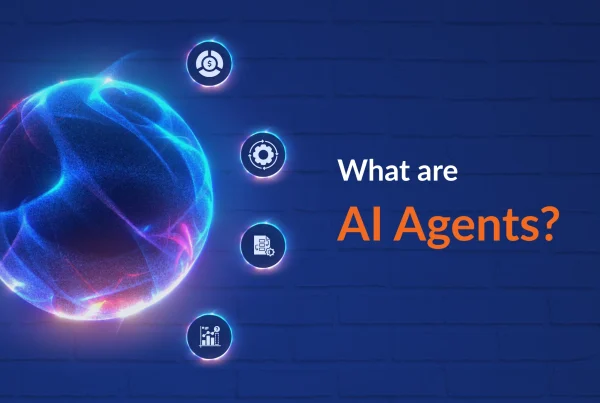Ever feel like you’re chasing trends in retail? Predicting customer needs, keeping them engaged, and balancing your supply chain—it’s a constant balancing act. What if there was a way to gain real-time insights into what customers crave, not just what historical data suggests?
Demand sensing is a forecasting methodology that captures real-time data and shares a near-immediate demand perspective. Imagine having instant visibility into what’s hot and what’s not, allowing you to tailor inventory, marketing campaigns, and even product development to stay ahead of the curve.
Keep reading and understand demand sensing in depth. Find out if it’s the right fit for your business.
What is Demand Sensing?
In the cutthroat world of retail, where trends shift faster than ever, staying ahead requires predicting the next big thing. Demand sensing empowers you to do exactly that. It acts as a central hub for real-time data streams. It captures insights—everything from social media to weather fluctuations—that impact buying habits.
Imagine a constant flow of information—social media chatter about trending products, sudden weather changes impacting buying habits, or even subtle shifts in market sentiment. Demand sensing captures it all. But here’s the magic: this isn’t just raw data. Machine learning algorithms in demand sensing turn live data into actionable insights. They predict accurate product popularity, often anticipating customer desires before they’re fully formed.
This translates to a significant shift in your retail strategy. Inventory management becomes proactive—with real-time stock adjustments—to meet demand. Marketing campaigns become laser-focused. These enable you to target products that resonate with your audience. Imagine shelves brimming with irresistible items, strategically curated based on a deep understanding of real-time customer desires.
Demand sensing isn’t only about incremental improvements; it’s a complete transformation. It replaces reactive methods with a proactive approach. Reduce stockouts, optimize inventory, and deliver laser-focused marketing campaigns. The result? A streamlined and responsive retail operation that maximizes profitability and customer satisfaction.
Benefits of Demand Sensing
Demand sensing revolutionizes how you manage inventory and respond to market conditions. This advanced analytical tool forecasts demand with impressive accuracy, ensuring you maintain optimal stock levels and meet customer expectations consistently.
Demand sensing utilizes sophisticated algorithms and real-time data to predict short-term customer demand. This technology gathers information from various sources, including point of sale, market trends, and external factors like weather or social events. By analyzing this data, demand sensing provides you with actionable insights just in time to make informed decisions about your inventory. Let’s look at some of its benefits and understand why is it essential for businesses.
1. Forecasting Precision
Traditional forecasting methods rely heavily on historical data, often overlooking current market realities. Demand sensing, however, focuses on the here and now. It looks at the latest information to predict what will happen in the next few days or weeks—not months. This level of precision enables you to adjust your inventory effectively, ensuring you are never caught off guard by sudden shifts in demand.Fewer Overstock and Understock Situations
2. Fewer Overstock and Understock Situations
One of the key benefits of demand sensing is its ability to minimize instances of overstock and understock. By understanding customer demand in real time, you adjust stock levels more dynamically. This adjustment prevents the costly consequences of excess inventory, such as markdowns and waste. Simultaneously, it reduces the risk of stockouts that can frustrate customers and lead to lost sales.
3. Enhanced Responsiveness to Market Conditions
The agility demand sensing offers transforms how you respond to the market. When demand shifts unexpectedly due to a viral trend or a competitor’s actions, you can react swiftly. This responsiveness not only preserves sales but also enhances customer satisfaction. Customers continue to find the products they want when they want them, boosting their loyalty to your brand.
4. Streamlined Supply Chain Operations
A more accurate demand forecast streamlines your entire supply chain. With better visibility into upcoming demand, you schedule production and distribution more efficiently. This synchronization reduces lead times and lowers costs by optimizing transportation and labor. A leaner supply chain means you operate more competitively, passing on savings and service improvements to your customers.
5. Targeted Marketing Efforts
Demand sensing also plays a crucial role in your marketing strategies. By predicting which products will be popular, you tailor your marketing campaigns to highlight these items. This targeted approach ensures that your marketing resources yield the highest returns. Promotions and advertisements become more effective because they align with real-time consumer interests and needs.
6. Better Financial Performance
The financial benefits of demand sensing are significant. By aligning your inventory with actual market demand, you maximize sales and minimize costs. The precision in stock levels prevents capital from being tied up in unsold goods. Moreover, the reduction in stockouts and overstocks contributes to healthier profit margins and better cash flow management.
7. Customer-Centric Retail Experiences
Demand sensing places the customer at the center of your operations. By anticipating what customers will purchase, you ensure that your stores and online platforms cater to their preferences. This proactive approach to inventory management not only meets but often exceeds customer expectations. Satisfied customers are more likely to return and recommend your brand, contributing to sustained business growth.
8. A Future-Proofed Business
As markets become increasingly volatile, the ability to adapt quickly is more crucial than ever. Demand sensing equips you with the tools to navigate these fluctuations successfully. By integrating cutting-edge technology into your operations, you prepare your business for future challenges and opportunities. This proactive stance ensures longevity and relevance in a competitive retail landscape.
Demand Sensing Process
Implementing demand sensing in your business isn’t a complicated process. All you require is to approach it step by step. Let’s look at the process of demand sensing below:
Step 1: Gather Real-Time Data
The foundation of accurate forecasts lies in comprehensive data collection. Cast a wide net to capture a rich tapestry of information. Internal sources like point-of-sale systems, warehouse inventory, and shipment statuses provide insights into your sales history and current stock levels. But don’t stop there! Look outwards: weather forecasts, social media trends, competitor promotions, and market conditions all paint a broader picture of customer behavior. Remember, real-time or near-real-time data is crucial for generating accurate predictions.
Step 2: Cleanse and Integrate Data
Once you have this data, it’s time to organize the chaos. Integrate all your data streams into a central system, creating a single source of truth. During this integration, meticulously clean the data to eliminate errors and inconsistencies. Remember, the quality of your data directly impacts the reliability of your forecasts. Dirty data in, unreliable forecasts out!
Step 3: Leverage Machine Learning for Analysis
This is where the magic happens. Advanced analytics, specifically machine learning algorithms, become your partners in decoding the data. These algorithms identify hidden demand patterns and connections that traditional analysis methods ignore. They account for seasonal variations, market trends, and other factors to generate the most accurate demand forecasts.
Step 4: Generate Granular Demand Forecasts
Empowered by the analyzed data, the system creates highly detailed short-term demand forecasts. These forecasts are often hyper-specific. This means they focus on individual SKUs (Stock Keeping Units) and span very short timeframes. Sometimes as short as a day or a week. This granular detail is a key differentiator between demand sensing and traditional forecasting.
Step 5: Optimize Operations with Precise Forecasts
Make data-driven decisions across your supply chain network. Adjust production schedules, optimize inventory allocation between locations, streamline shipping routes, and plan promotions or price changes. The ultimate goal? Align your supply with anticipated demand—minimize waste and maximize sales opportunities.
Step 6: Continuously Learn and Adapt
Demand-sensing systems learn from the accuracy of their predictions. With continuous refinement based on past successes and failures.
Step 7: Integrate Insights Across Business Operations
To unlock its full potential, demand sensing must permeate your entire organization. Ensure alignment across departments like supply chain, sales, and marketing. React swiftly to insights for real-world retail agility.
💡Fact
According to an AWS report, demand sensing boosts forecast accuracy by 23%, reduces inventory on hand by 5%, and slashes fulfillment redirect costs by 30%.
Conclusion
Choosing a forecasting method isn’t about which one’s better. It’s mainly about which method is catering to your business objectives. With the explanation above—about demand sensing, its benefits, and process—prepare for your next steps with precision.
Take the Next Step
It is about time to take off with advanced tools that cater to your business needs. Take action today!
Stay ahead of demand shifts with real-time demand sensing. Forecast demand accurately using advanced machine learning algorithms, tailored to every SKU, store, and hierarchy level. Optimize short-term strategies and seize opportunities with demand-sensing insights for agile and proactive decision-making.
Frequently Asked Questions
What is the primary goal of demand sensing?
Demand sensing aims to provide accurate demand predictions amid market volatility, aiding retailers in responsive inventory management.
What is the difference between demand sensing and forecasting?
Demand sensing ensures accuracy in short-term demand predictions. It is fit for industries with volatile consumer demand. In contrast, demand forecasting ensures long-term predictions. Since it uses historical data to forecast demand, it enables retailers to build long-term strategies for their business.
What is the process of demand sensing?
It involves collecting real-time data, analyzing it with machine learning, generating short-term forecasts, and using those to optimize operations and adapt to changing demand.





